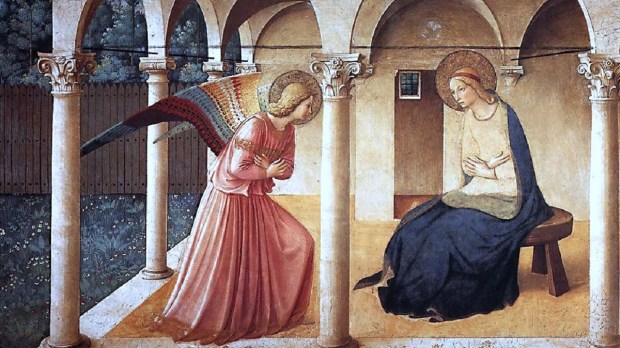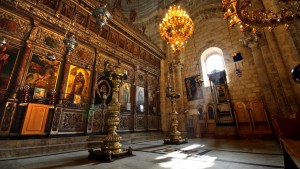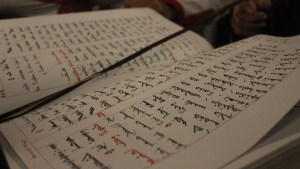The Dura-Europos Church in modern day-Syria is the earliest Christian church we currently know of – it was discovered in the 1920s by a team of archaeologists from Yale. Its artwork, dating back to the 2nd and 3rd centuries, includes the depiction of a woman leaning over a well. For a long time, the image was considered to be a representation of the Samaritan woman who speaks with Jesus beside Jacob’s well as recounted by John (4:1-42). But other interpretations make it the earliest image of the Annunciation.
As Michael Peppard explained in his 2016 article for the NYT, the ruins of Dura-Europos (then a military outpost on the eastern border of the Roman empire, today’s Syria) “have yielded more distinct artifacts than almost any other ancient archaeological site: an intact Roman shield, a lavishly painted synagogue, a temple to the gods of nearby Palmyra.”
Indeed, Michael Rostovtzeff, the director of Yale’s excavations at the site, called it “the Pompeii of the Syrian desert.”
Since major portions of the Roman garrison were buried intentionally “to bolster a rampart against a Sasanian army invading from the east in the 250s,” Peppard explains, contents and the date of many buildings, including the house-church, were secure. That’s why the painting is so well preserved.
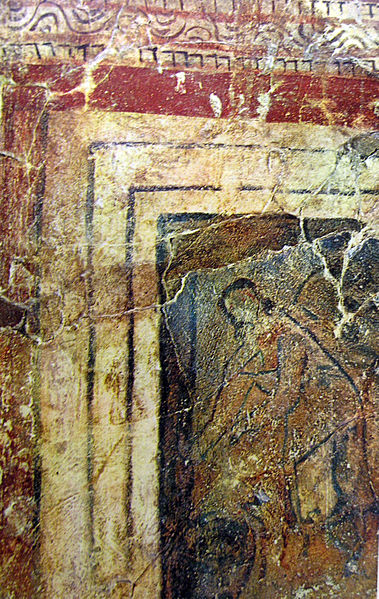
Common interpretations claim the image most likely depicts a scene from the encounter between Christ (who is not shown in the image) and a woman from Samaria as recorded in the Gospel of John. But historians also know, Peppard rightly points out, that the Samaritan woman was usually depicted in dialogue with Our Lord. This woman appears to be alone. And early Syrian Marian traditions might explain why.
It is true that the Samaritan woman was a well-known and respected biblical figure for early Christians. But Syrian Christians knew of a much more prominent “woman at the well.”
Peppard, who is an Associate Professor of Theology at Fordham University, points out that the Proto-evangelium of James (an apocryphal 2nd-century biography of Mary that circulated widely among Syrian Christians) describes how one day, during a break from her work, Mary “took the pitcher and went forth to draw water, and behold, a voice said: ‘Hail, you are highly favored, the Lord is with you, blessed are you among women.’ And she looked around on the right and on the left to see from where this voice could have come.” During this first encounter, at a well or spring, the angel was heard but not seen. Mary appeared to be alone – just like the woman featured at the Dura-Europos church mural painting.
As Vittoria Traverso notes, further study of the image also revealed details that are invisible to the naked eye. Two lines reach the woman’s torso. As seen in most Annunciation images (the more Western paintings that we might be used to), these lines suggest the Incarnation. Based on such evidence, the Dura-Europos painting can be considered not only the first ever portrait of the Holy Mother, but also the earliest image of the Annunciation known to date.
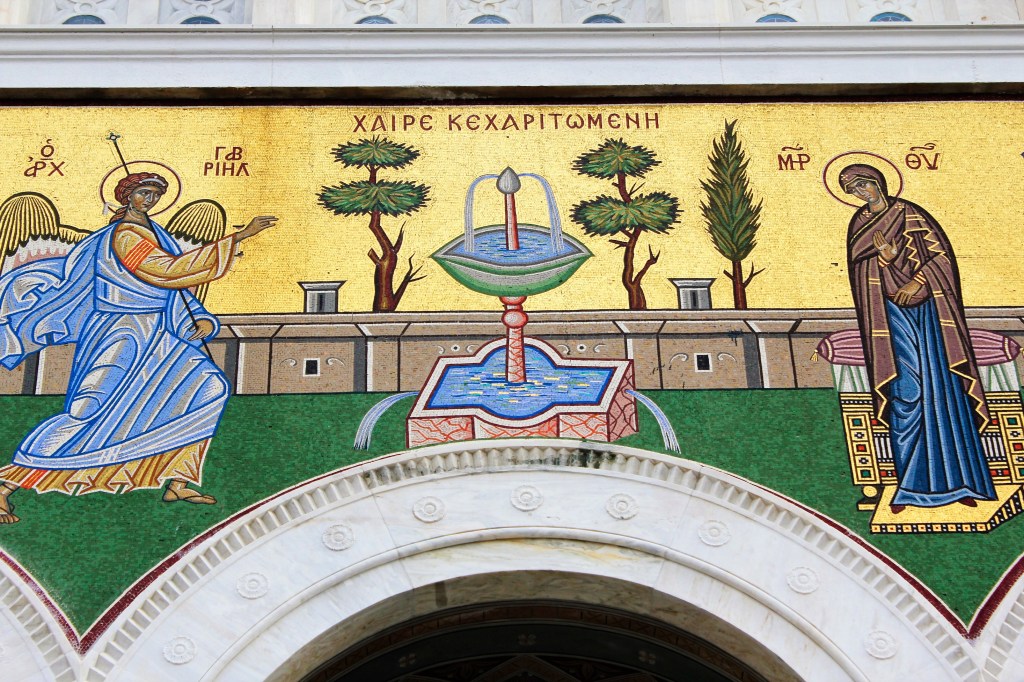
Byzantine images of the Annunciation, although much later than the figure from Dura-Europos, do resemble it. In fact, plenty of Eastern and Orthodox mosaics show how the image of Mary at the well was (and, somehow, still is) quite an important motif for Eastern Christians.
